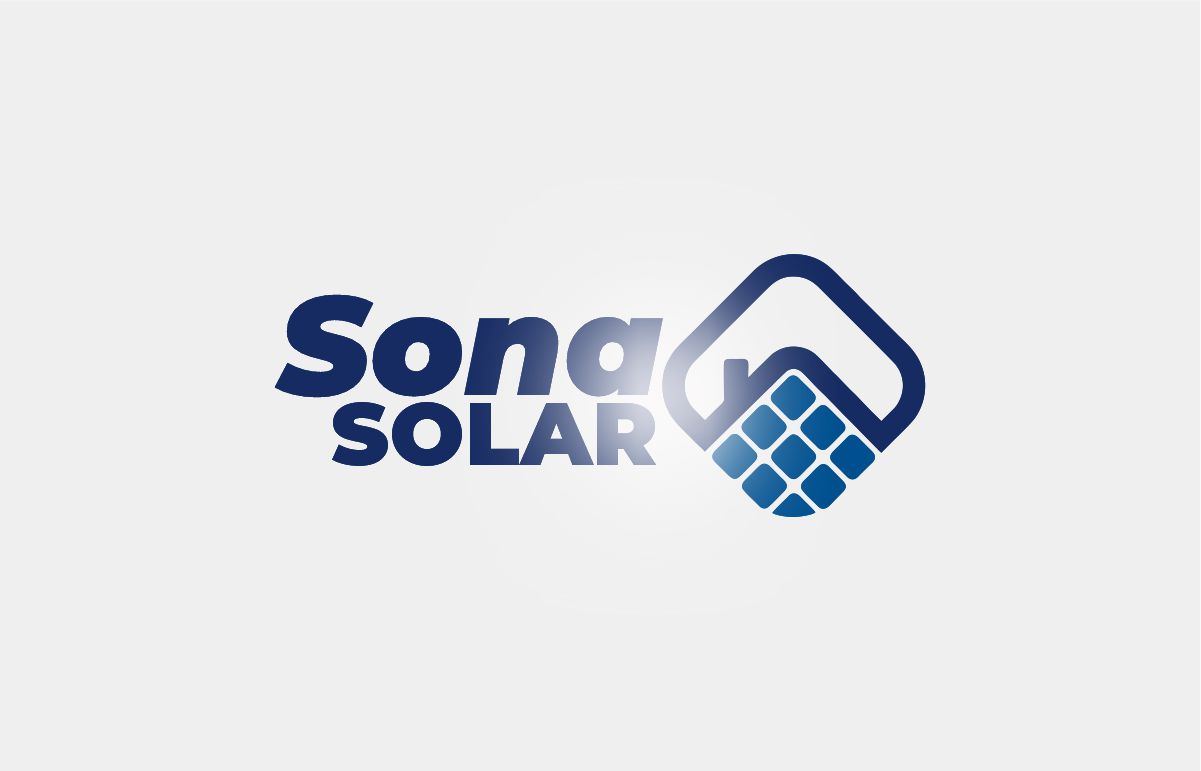Welcome to Sona Solar Zimbabwe - Your One-Stop Shop for Affordable, Top-Tier Solar Solutions.
Product images and specifications are for illustrative purposes only and may not reflect the exact items available. All solar products are subject to availability. Please contact us for current inventory and pricing.
Feel free Call us or WhatsApp us on +263 78 922 2847, +263 78 293 3586, +263 78 864 2437, +263 78 119 0001, +263 77 832 4532 and +263 78 623 1488.
For Borehole Drilling Services WhatsApp us on +263 77 389 8979 or +263 71 918 7878.
The purpose of the information on this page to provide a basic understanding of the major components in a basic Solar Power System in Zimbabwe.
This will help you identify and select the correct size components for your system.
The Solar Panel converts sunlight into DC electricity to charge the battery. This DC electricity is fed to the battery via a solar regulator which ensures the battery is charged properly and not damaged.
DC appliances can be powered directly from the battery, but AC appliances require an inverter to convert the DC electricity into 240 Volt AC Power.
 |
| The Basics Of A Solar System in Zimbabwe - How Solar Power Works! |
Some DC appliances can be connected to the regulator to take advantage of the Low Voltage Disconnect and protect your battery.
Detailed Component Description:
- Solar Panels: Solar Panels are classified according to their rated power output in Watts. This rating is the amount of power the solar panel would be expected to produce in 1 peak sun hour. Different geographical locations receive different quantities of average peak sun hours per day. Solar Panels can be wired in series or in parallel to increase voltage or current respectively. The rated terminal voltage of a 12 Volt Solar Panel is usually around 17.0 Volts, but through the use of a regulator, this voltage is reduced to around 13 to 15 Volts as required for battery charging. Solar Panel output is affected by the cell operating temperature. Panels are rated at a nominal temperature of 25 degrees Celcius. The output of a typical solar panel can be expected to vary by 2.5% for every 5 degrees variation in temperature. As the temperature increases, the output decreases. With this in mind, it is worth noting that, if the panels are very cool due to cloud cover, and the sun bursts through the cloud, it is possible to exceed the rated output of the panel. Keep this in mind when sizing your solar regulator.
- Solar Regulators: The purpose of solar regulators, or charge controllers as they are also called, is to regulate the current from the solar panels to prevent the batteries from overcharging. Overcharging causes gassing and loss of electrolyte resulting in damage to the batteries. A solar regulator is used to sense when the batteries are fully charged and to stop, or decrease, the amount of current flowing to the battery. Most solar regulators also include a Low Voltage Disconnect feature, which will switch off the supply to the load if the battery voltage falls below the cut-off voltage. This prevents the battery from permanent damage and reduced life expectancy. A solar regulator also prevents the battery from backfeeding into the solar panel at night and, hence, flattening the battery. Solar regulators are rated by the amount of current they can receive from the solar panels.
- Inverters: An inverter is a device which converts the DC power in a battery to 240V AC electricity. Inverters come in two basic output designs, pure sine wave and modified sine wave (SquareWave). Most AC devices will work fine on the modified sinewave inverter, but there are some exceptions. Devices such as laser printers can be damaged when run on modified sinewave power. Motors and power supplies usually run warmer and less efficiently, and some things, like fans, amplifiers, and cheap fluorescent lights, give off an audible buzz on modified sinewave power. However, modified sinewave inverters make the conversion from DC to AC very efficiently, and they are relatively inexpensive. Pure sine wave inverters provide AC power that is virtually identical to, and often cleaner than, power from the grid. Inverters are generally rated by the amount of AC power they can supply continuously. Manufacturers generally also provide 5 second and 1/2 hour surge figures. The surge figures give an idea of how much power can be supplied by the inverter for 5 seconds and 1/2 an hour before the inverter's overload protection trips and cuts the power.
- Deep Cycle Solar Batteries: Deep cycle batteries that are used in solar power systems are designed to be discharged over a long period of time (e.g. 100 hours) and recharged hundreds or thousands of times, unlike conventional car batteries which are designed to provide a large amount of current for a short amount of time. To ensure long battery life, deep cycle batteries should not be discharged beyond 70% of their capacity. i.e 30 % capacity remaining. Discharging beyond this level will significantly reduce the life of the batteries. Deep cycle batteries are rated in Ampere Hours (Ah). This rating also includes a discharge rate, usually at 20 or 100 hours. This rating specifies the amount of current in Amps that the battery can supply over the specified number of hours. As an example, a battery rated at 120Ah at the 100 hour rate can supply a total of 120A over a period of 100 hours. This would equate to 1.2A per hour. Due to internal heating at higher discharge rates, the same battery could supply 110Ah at the 20 hour rate, or 5.5A per hour for 20 hours. In practice, this battery could run a 60W 12VDC TV for over 20 hours before being completely drained. There are many factors that can affect the performance and life of a battery bank. It is highly recommended that you speak with an experienced solar power system installer or solar battery provider prior to making any significant battery purchase.
- Solar Regulator Sizing Information: A solar regulator must be able to handle the maximum current that can be produced by the solar panels. Reflected sunlight and specific temperature conditions can increase the output current of a solar panel by as much as 25% above it's rated output current. The solar regulator must be sized to handle the increased current. Solar regulators often short the solar panel input when regulating. This does not damage the solar panel, but it does mean that the solar regulator must be sized to handle 125% of the solar panel's rated short circuit current.
Sona Solar Zimbabwe - Your One-Stop Shop for Affordable, Top-Tier Solar Solutions.
Named after the Gaelic term (Old Irish Word) Sonas - for Good Fortune (Prosperity and Happiness) - Sona Solar Zimbabwe is committed to bringing Prosperity and Happiness to its customers through Solar Solutions in Zimbabwe. We deliver turn-key energy efficient solutions to meet client energy and budgetary needs and reduce environmental impact.Sona Solar Zimbabwe Is Customer Centric. We offer a Comprehensive One-Stop-Shop experience and Bridge The Huge Gap Between Getting The Best, Quality Products and Getting it at an Affordable Price.
Feel free Call us or WhatsApp us on on +263 78 922 2847, +263 78 293 3586, +263 78 864 2437, +263 78 119 0001, +263 77 832 4532 and +263 78 623 1488.
For Borehole Drilling Services WhatsApp us on +263 77 389 8979 or +263 71 918 7878.

Sona Solar Zimbabwe
Sona Solar Zimbabwe7 Frank Johnson Avenue,
Avenues, Eastlea
Harare, Zimbabwe.
Call Us Today:
Solar Sales: +263 78 293 3586
Solar Sales: +263 78 922 2847
Operations: +263 78 864 2437
Sona Landline: +263 24 2797750
Email: sonasolarzw@gmail.com
Website: www.sonasolar.co.zw

Borehole Experts Zimbabwe
Borehole Experts Zimbabwe7 Frank Johnson Avenue,
Avenues, Eastlea
Harare, Zimbabwe.
Call Us Today:
Borehole Sales: +263 77 389 8979
Borehole Sales: +263 71 500 3777
Borehole Operations: +263 71 918 7878
Borehole Landline: +263 24 2797750
Email: boreholeexpertszw@gmail.com
Website: www.boreholeexperts.co.zw
Choosing The Best Solar Company in Zimbabwe:
Choosing a solar panel installation company can be time-consuming. It is easy to be overwhelmed when comparing the reputation, price, warranty, and panel options of different solar providers.Sona Solar Zimbabwe stands out as one of the most reputable companies in Zimbabwe. Sona Solar Zimbabwe offers reliable systems with a 25-year warranty, 10-year workmanship warranty, and two-year production guarantee.
Sona Solar Zimbabwe prides itself on offering original solar products and accessories. Sona Solar Zimbabwe also maintains partnerships with reputable brands around the world.

.jpg)








.jpg)





